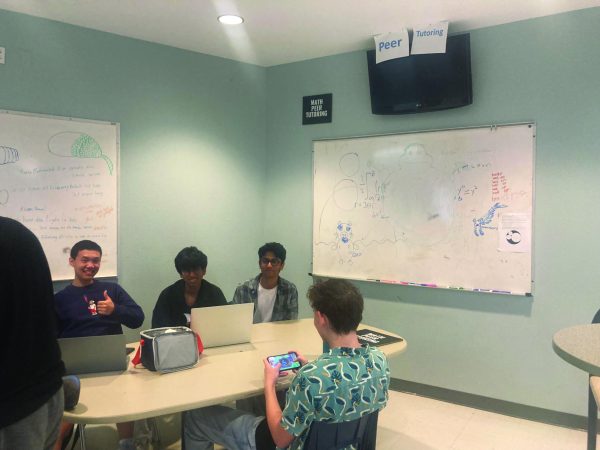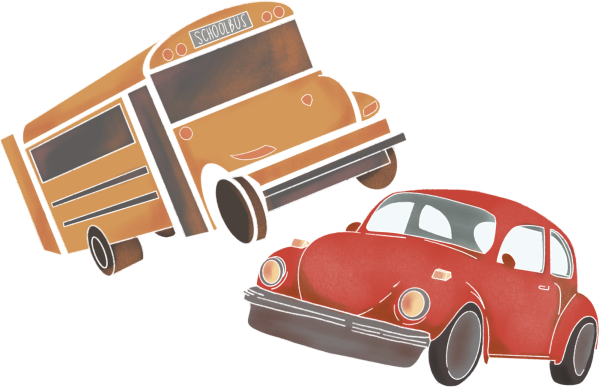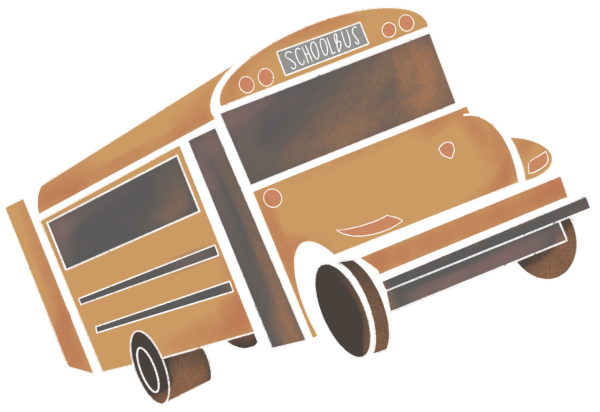IN- DEPTH: LASA Sustainability
March 28, 2022
Because the Austin Independent School District (AISD) has about 75,000 students across 132 facilities, AISD sustainability manager Darien Clary said the district has a large impact on the environmental sustainability of its community by using a lot of resources. According to the AISD Energy Management, the district as a whole used over 28 million gallons of water and about 13 million kilowatt hours of energy in October 2021 alone. In comparison, the average household in Texas uses only 1,176 kilowatt hours of energy in one month, according to the Energy Information Administration.
In addition to using a lot of energy and water, the district also has the capacity to improve sustainability. For example, the district has recycled and composted over 28 million pounds of waste since 2015, according to Clary.
Due to the impact that schools can have on the environment, students are trying to reduce their environmental impacts. Clary said students can help the district be more sustainable through conserving energy, planting trees, limiting excess water usage, and recycling or composting.
Environmental Club co-president and senior Anna Fulton said the club is working with AISD Zero Waste manager Amanda Mortl to add composting bins to the new campus. According to Fulton, the club received bins for LASA’s old campus, but the bins were left when LASA moved, so the club has to reapply for bins.
“We’re trying to get compost bins for the bathrooms for the paper towels, which is something we had at the old campus because that’s just a really easy way to prevent that from going to landfill,” Fulton said. “For the most part, there’s not a lot of sorting that has to happen when people are using the bathroom.”
According to Fulton, the club is also starting to collect old dry erase markers, since the markers can be recycled but need to go to a special sorting center first. The idea was originally brought up by the math department, but Fulton hopes to expand the initiative to the whole school.
“We’re going to start having bins in each wing where the teachers can throw their old dry erase markers and then depending how many we get, every other Friday or once a month depending, we’re going to have people at lunch collect all the bins from the school,” Fulton said. “Then one of us from the club will drive them down to the recycling center.”
Even though the Environmental Club does not have all their recycling and composting bins yet, Fulton said she is optimistic that they can make large progress once the bins are in place. Fulton hopes that once students have more recycling and composting bins available, they will naturally use the bins instead of having to put things in the trash.
“There are a lot of things we could do that are really easy if we had the materials,” Fulton said. “Once we get materials, it doesn’t take that much effort to throw a bottle into a blue bin instead of a gray bin. If we can get composting bins in the bathrooms, that does not require a bunch of sorting.”
Along with re-starting composting and recycling initiatives at the new campus, the club is continuing trash cleanups at school where students pick up trash, like water bottle caps or plastic wrappers, in courtyards and outdoor areas. Fulton said the club provides trash bags, gloves, and snacks for students while they walk around in groups and collect trash.
“Last time we did a cleanup we had so many bags of trash, and it only took us an hour because we had lots of different people which was great,” Fulton said. “It really does make a difference. You don’t realize how much trash is just lying on the ground until you see it condensed into those bags.”
Another way students are increasing sustainability is by planting trees in the courtyards. Senior Rebecca George is designing the courtyard next to the orchestra room and the 400 wing with benches and plants for students to hang out there.
“In the long term, I hope any plants I put in prove themselves sustainable and that the structures I put in the courtyard like benches and tables are not something that seem stuck there,” George said, “but that the courtyard remains something which grows and is revised for and by the students occupying this school.”
George is committed to keeping the courtyard as sustainable as possible through planting native plants that require less water. George is also limiting the impermeable cover, or surfaces that water can not flow through, to help facilitate natural water runoff and maintain natural areas for vegetation.
“Planting trees is important to offsetting our carbon footprint by growing plants which process carbon dioxide while we constantly emit air and other pollution,” George said. “On a similar note, one similarity through all my plans is that I refuse to put impermeable cover over the ground, especially I am against concrete.”
AISD sustainability manager Darien Clary works with sustainability projects across the district, and she said other students have helped their campus be more environmentally friendly by conserving energy. In particular, students and teachers can turn off electronics, make sure windows are closed, and keep A/C vents clear before leaving the building.
“We also have over 5,000 classrooms across the district, so when you think about small changes that an individual can do at a district this size, it adds up fast,” Clary said. “Even little things like turning off the lights, unplugging your appliances, especially before winter break, or Thanksgiving break, or spring break across the district, that means a lot of energy conservation, and a lot of money saved.”
AISD energy conservation specialist Ana Echeverria said it is also important for students to be mindful of how long extracurricular activities, like band, theater, or clubs, are in the building after the school day ends because that requires the district to keep the A/C and lighting on longer. Echeverria said it is particularly helpful if students schedule activities with other clubs on the same day, so the whole building does not have to run the A/C for one event.
“In any sustainable project the most important factor is reduction,” Echeverria said. “AISD is committed to providing opportunities for all students, but we want to be mindful of the consumption after hours.”
AISD’s energy department also tracks hourly water usage at 100 of about 132 district buildings. Echeverria said the department occasionally finds spikes in the data but sometimes struggles to find the cause for a few days. It is helpful when students and teachers watch out for leaks from school sinks or in classrooms, so the district knows where potential problems might be.
“It would benefit it a lot if you report leaks,” Echeverria said. “Even if you see a small leak, that translates to gallons and gallons of water by the time you see it.”
Along with daily actions like recycling or conserving energy, Fulton said the Environmental Club also organized a letter writing social on Jan. 14 to urge political leaders to make long term change. During the social, students wrote letters to their county representatives, state officials, and even President Joe Biden to ask for climate conscious legislation.
“We got around 100 letters, which was really good,” Fulton said. “We provided a template just urging lawmakers to support green bills and to take more action that’s addressing the root of the problem.”
Clary is glad so many students are working on environmental sustainability in their schools. She said hands-on student-run projects are beneficial for protecting the environment and also for problem-solving opportunities in education.
“You can sit in a classroom and listen to a lesson, or you can get out and do,” Clary said. “Sustainability is so geared towards action that I find that that’s where so much learning happens and can really help students and staff find a lot of purpose in that.”
Clary and Echeverria are optimistic for the future of sustainability across the district because of students like Fulton and George helping to make LASA more environmentally friendly. The Environmental Club hopes to get more recycling and composting bins by the end of the school year, and George hopes to start planting trees after spring break. AISD is also currently conducting a greenhouse gas inventory to examine other ways that the district can lower their carbon footprint. Clary hopes that a variety of students will choose to help their campus be more environmentally conscious.
“Sustainability is broad,” Clary said. “So with that, I think it’s important to remember and for students to know that there’s a place in sustainability for everybody.”










